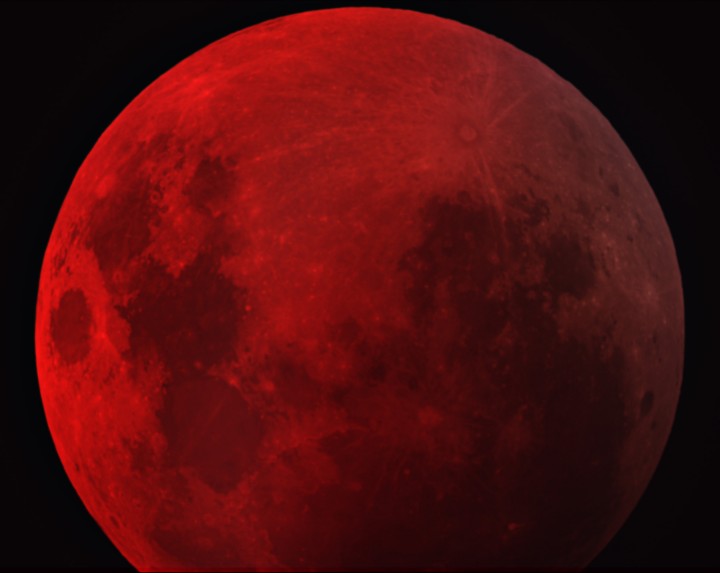Credit & Copyright: Martin Pugh
Explanation:
The Moon passed close to the center of Earth's shadow
on August 28th.
Seen best by skywatchers in
western North America, and the Pacific region, the resulting total
lunar eclipse was a dark one, lasting about 90 minutes.
In this telescopic image taken near mid totality from
Yass,
NSW Australia, the 85 kilometer wide ray crater Tycho lies near
the top right of the shadowed lunar surface.
Of course, even
during a total lunar eclipse,the Moon
is not completely dark.
Instead the Moon remains visible during totality, reflecting
reddened light filtering into the Earth's shadow.
The light comes from all the sunsets and
sunrises, as seen from the
lunar perspective,
around the edges of a silhouetted Earth.
1999 2000 2001 2002 2003 2004 2005 2006 2007 2008 2009 2010 2011 2012 2013 2014 2015 2016 2017 2018 2019 2020 2021 2022 2023 2024 2025 |
Yanvar' Fevral' Mart Aprel' Mai Iyun' Iyul' Avgust Sentyabr' Oktyabr' Noyabr' Dekabr' |
NASA Web Site Statements, Warnings, and Disclaimers
NASA Official: Jay Norris. Specific rights apply.
A service of: LHEA at NASA / GSFC
& Michigan Tech. U.
|
Publikacii s klyuchevymi slovami:
lunar eclipse - lunnoe zatmenie
Publikacii so slovami: lunar eclipse - lunnoe zatmenie | |
Sm. takzhe:
Vse publikacii na tu zhe temu >> | |
